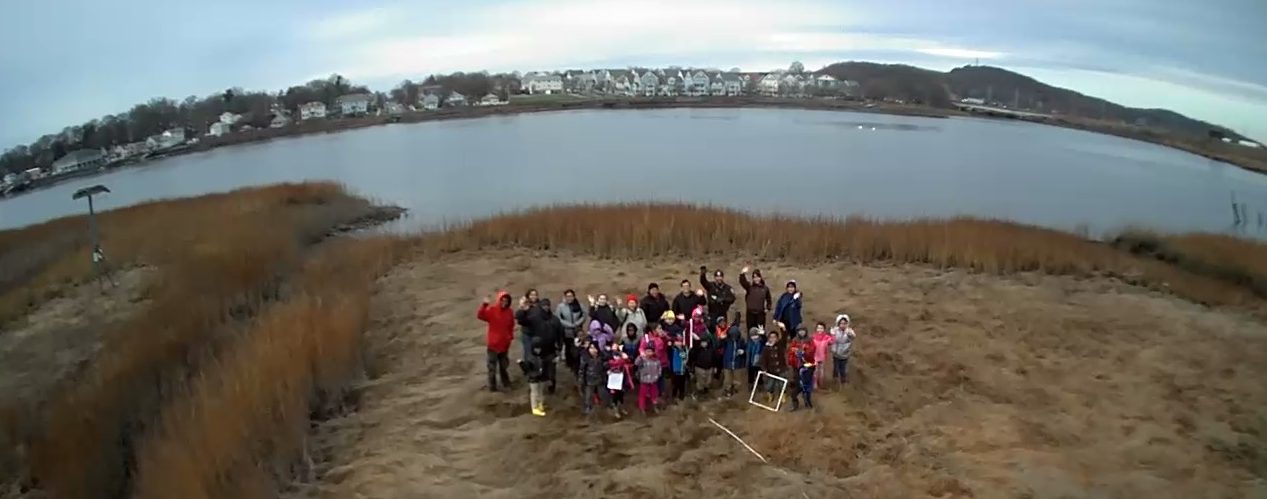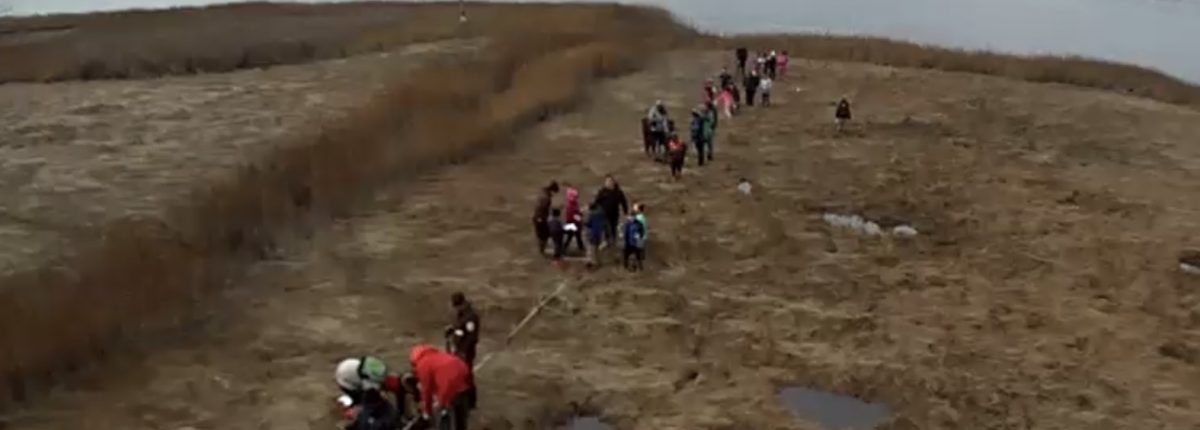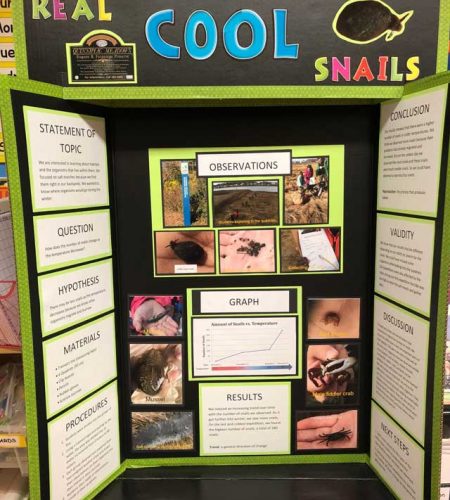
Diane Huot is our Seedlings Fellow at Conte West Hills School. She teaches first grade and is collaborating with SEC alumni teaching second grade. Diane’s class has visited Quinnipiac Meadows Reserve several times since the beginning of the school year as they study habitats and organisms. What follows is her description of their study thus far.
It’s been a busy year for the first graders in my classroom at Conte West Hills Magnet School. In October we had a visit from Ivette Lopez from the U.S. Fish and Wildlife Service. She spoke to us and shared a Power Point presentation about different habitats and organisms. She also brought in animal pelts for us to examine. The children had fun identifying the different animals. We looked at skunk, wolf, beaver and a coyote pelts.
We took a field trip to Common Ground High School in November and took a walk on the nature trail. We were looking for different animal habitats. We found hollow logs which make a great home for small organisms, bird’s nests, rotting trees and leaf litter with lots of insects. We examined different plants and the children were most fascinated by moss. We were amazed at how soft moss is and how much it looks like a carpet.
The following week, we had better luck on our trip to Quinnipiac Meadows Salt Marsh. This time, Miss Lopez brought along Ranger Shaun and Biologist Kris from the U.S Fish and Wildlife Service. We walked through the maritime forest and trudged into the marsh in five groups of five and set our quadrats every ten meters to closely examine what we could find in these 50 centimeter “squares”. After moving the cordgrass around we found snails and used tally marks on our data sheets to count up the snails in each quadrat.

Ranger Shaun and Biologist Kris gathered plant samples and the children shoveled detritus (organic matter produced by the decomposition of organisms) into a bucket and we returned to the classroom. They helped us identify goldenrod, staghorn sumac, phragmites, lamb’s ear, and bittersweet. We used hand lenses to look closely at detritus and found small lumps of debris. We discussed whether we would find more snails on our next two trips as we head into winter and it gets colder. Most of us thought we would see fewer snails as the temperature decreased and decided this would be our hypothesis for our science fair project.
In our discussions, following our all our trips we wondered why we saw more snails. Our range was from about 70 snails on our second trip (we gathered no data due to high tide on our first trip), to over 260 snails on our last trip. So, our results show that there were a higher number of snails in the colder temperatures. We think we observed more snails because many of their predators had migrated and burrowed. However, on the coldest day when we observed the most snails, they were much smaller. We think we may have observed a reproduction event. We realize our results may be different depending on our ability to look for the snails and we could have missed some in our quadrats. We learned that snails are an important part of their habitat. Organisms outside our quadrats such as clams, ribbed mussels, fiddler crabs and birds can be predators to the snail. The marsh also serves as a nursery ground helping protect baby organisms from predators. It can also serve as a resting spot for migrating birds. We learned we should work to protect the salt marsh and teach others about the marsh is important.

Our next steps are to learn more about the life cycle of the marsh snail and to understand the reproduction event we think we observed. We will be taking another trip to the marsh in the spring to see how the number of snails change as the temperature gets warmer.
We are hoping that with additional research and data our project will be chosen to go to the New Haven Science Fair.
